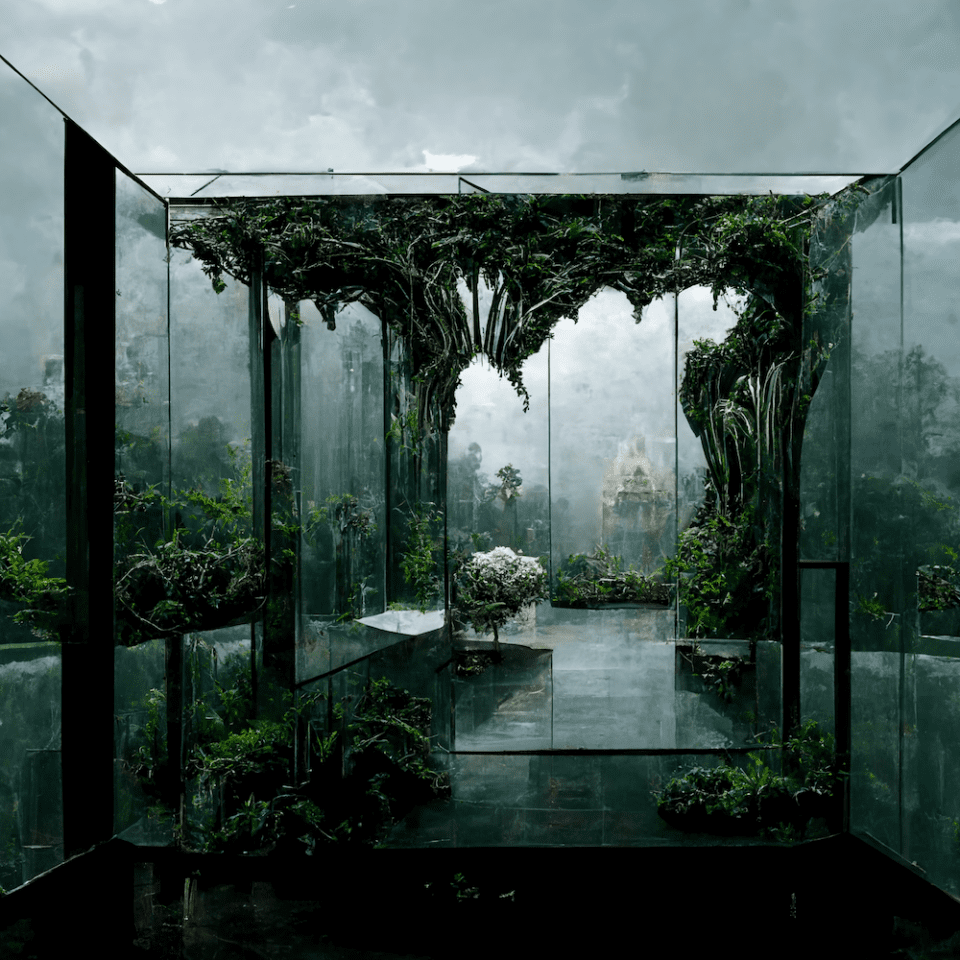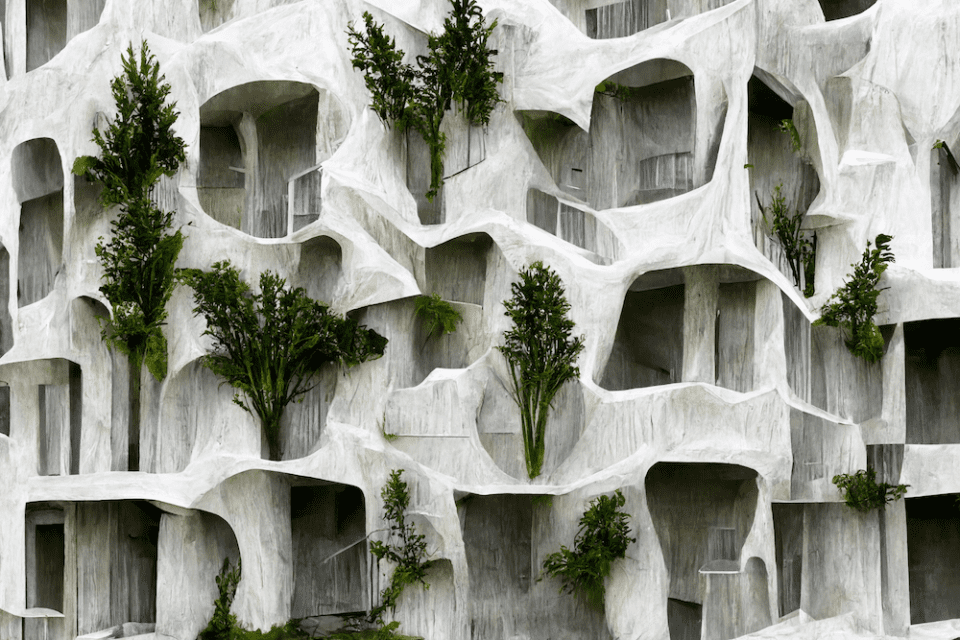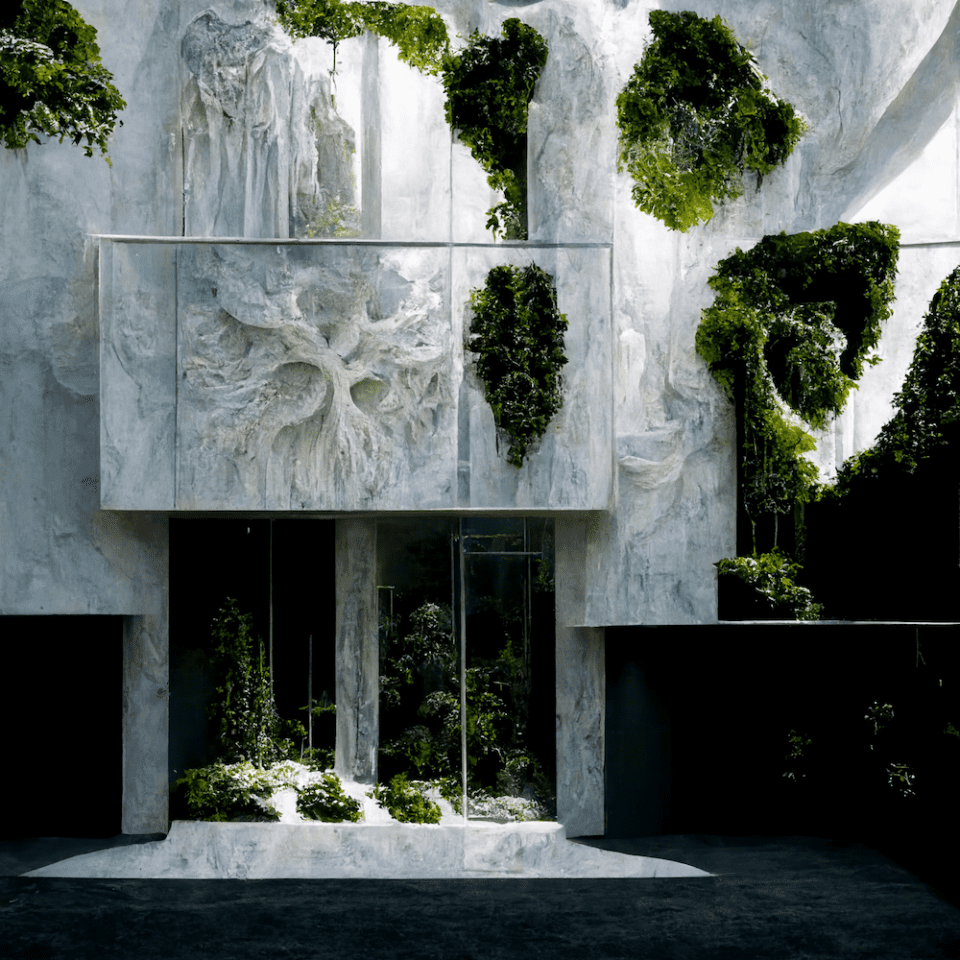The term ‘biomorphic’ is derived from two Greek words: ‘bios’ (meaning life) and “morphe” (translating as form). In art, it’s used to describe shapes that evoke naturally occurring patterns – like plants, living organisms and parts of the human body. Italian architect Niccolo Casas works in this space, collaborating with Dutch fashion-tech designer Iris van Herpen and environmental nonprofit Parley for the Oceans.



Casas’ recent project combines two seemingly contrasting visual languages: free formations and linear geometry. The goal is to design buildings which balance elements of human and non-human life, such that they can “coexist without one being altered by the other.” The structures were made using artificial intelligence from Midjourney, an independent research lab exploring new mediums of thought. Its AI creates images from textual descriptions, aiming to “expand the imaginative powers of the human species.”



The resulting scenes are dystopian: the stuff of fantasy or science fiction. Leaves emerge from repeated, grid-like marble windows – reminiscent of giant scales or the shadowy holes of a wasp’s nest. Elsewhere giant transparent boxes float on water, home to towering trees and bushes. Set against gloomy, cloud-filled skies, each tank seems to grow in height as the plants within search for light, pushing against the walls.
Niccolo Casas, Plasticity, is at V&A London from 17 September – 2 October vam.ac.uk
All images created by Niccolo Casas with Artificial Intelligence MidJourney.





